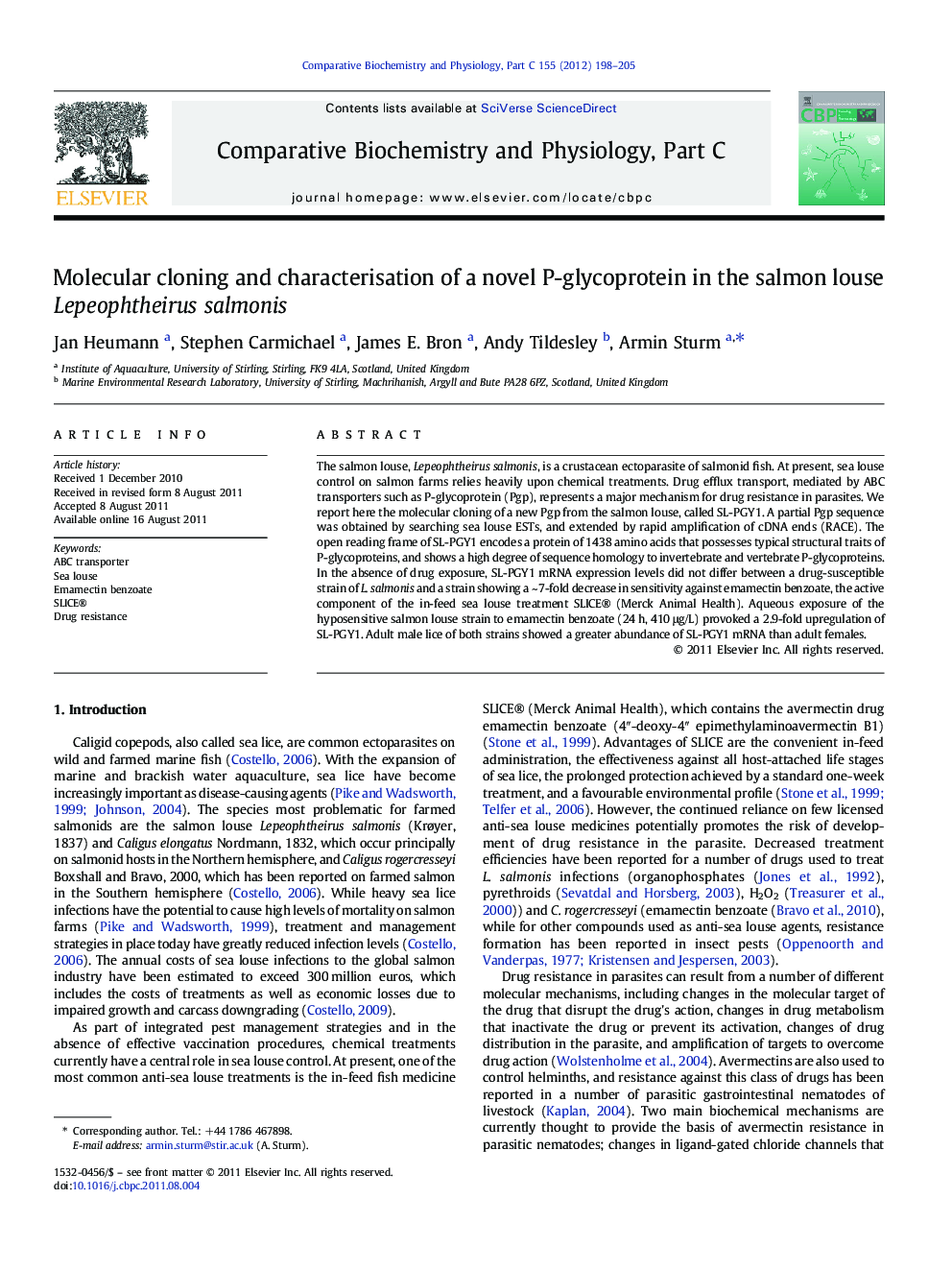| Article ID | Journal | Published Year | Pages | File Type |
|---|---|---|---|---|
| 10821657 | Comparative Biochemistry and Physiology Part C: Toxicology & Pharmacology | 2012 | 8 Pages |
Abstract
The salmon louse, Lepeophtheirus salmonis, is a crustacean ectoparasite of salmonid fish. At present, sea louse control on salmon farms relies heavily upon chemical treatments. Drug efflux transport, mediated by ABC transporters such as P-glycoprotein (Pgp), represents a major mechanism for drug resistance in parasites. We report here the molecular cloning of a new Pgp from the salmon louse, called SL-PGY1. A partial Pgp sequence was obtained by searching sea louse ESTs, and extended by rapid amplification of cDNA ends (RACE). The open reading frame of SL-PGY1 encodes a protein of 1438 amino acids that possesses typical structural traits of P-glycoproteins, and shows a high degree of sequence homology to invertebrate and vertebrate P-glycoproteins. In the absence of drug exposure, SL-PGY1 mRNA expression levels did not differ between a drug-susceptible strain of L. salmonis and a strain showing a ~ 7-fold decrease in sensitivity against emamectin benzoate, the active component of the in-feed sea louse treatment SLICE® (Merck Animal Health). Aqueous exposure of the hyposensitive salmon louse strain to emamectin benzoate (24 h, 410 μg/L) provoked a 2.9-fold upregulation of SL-PGY1. Adult male lice of both strains showed a greater abundance of SL-PGY1 mRNA than adult females.
Related Topics
Life Sciences
Biochemistry, Genetics and Molecular Biology
Biochemistry
Authors
Jan Heumann, Stephen Carmichael, James E. Bron, Andy Tildesley, Armin Sturm,
